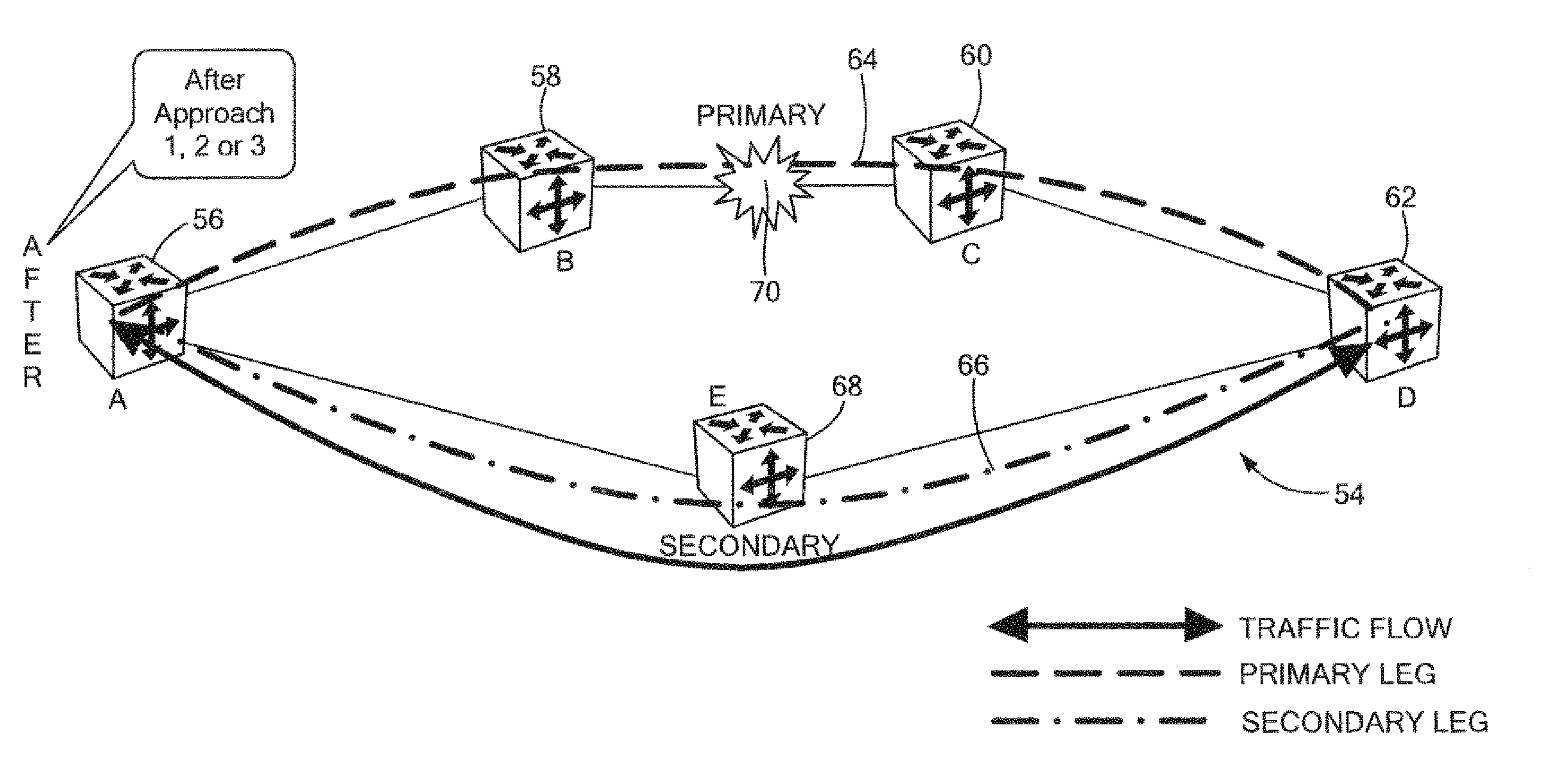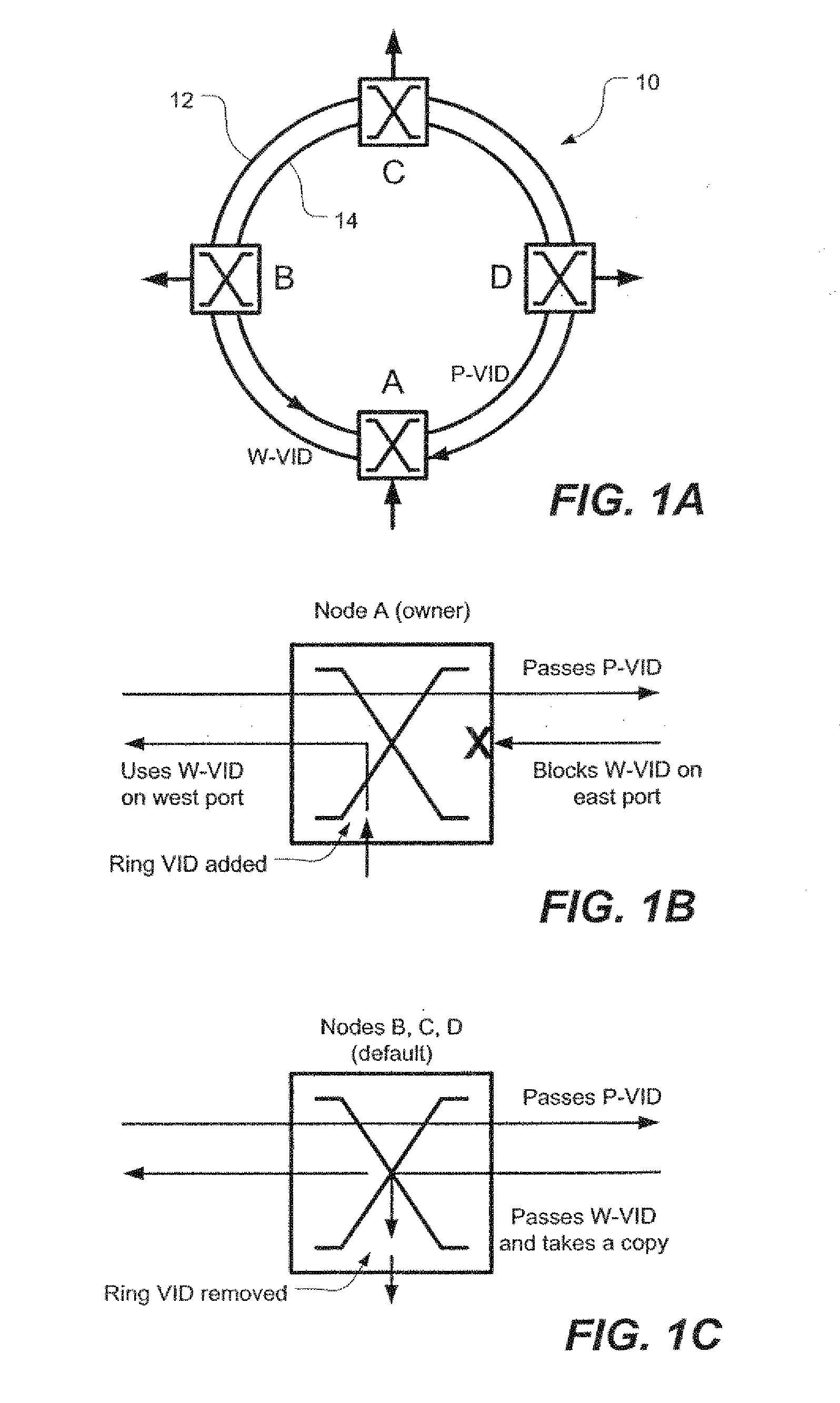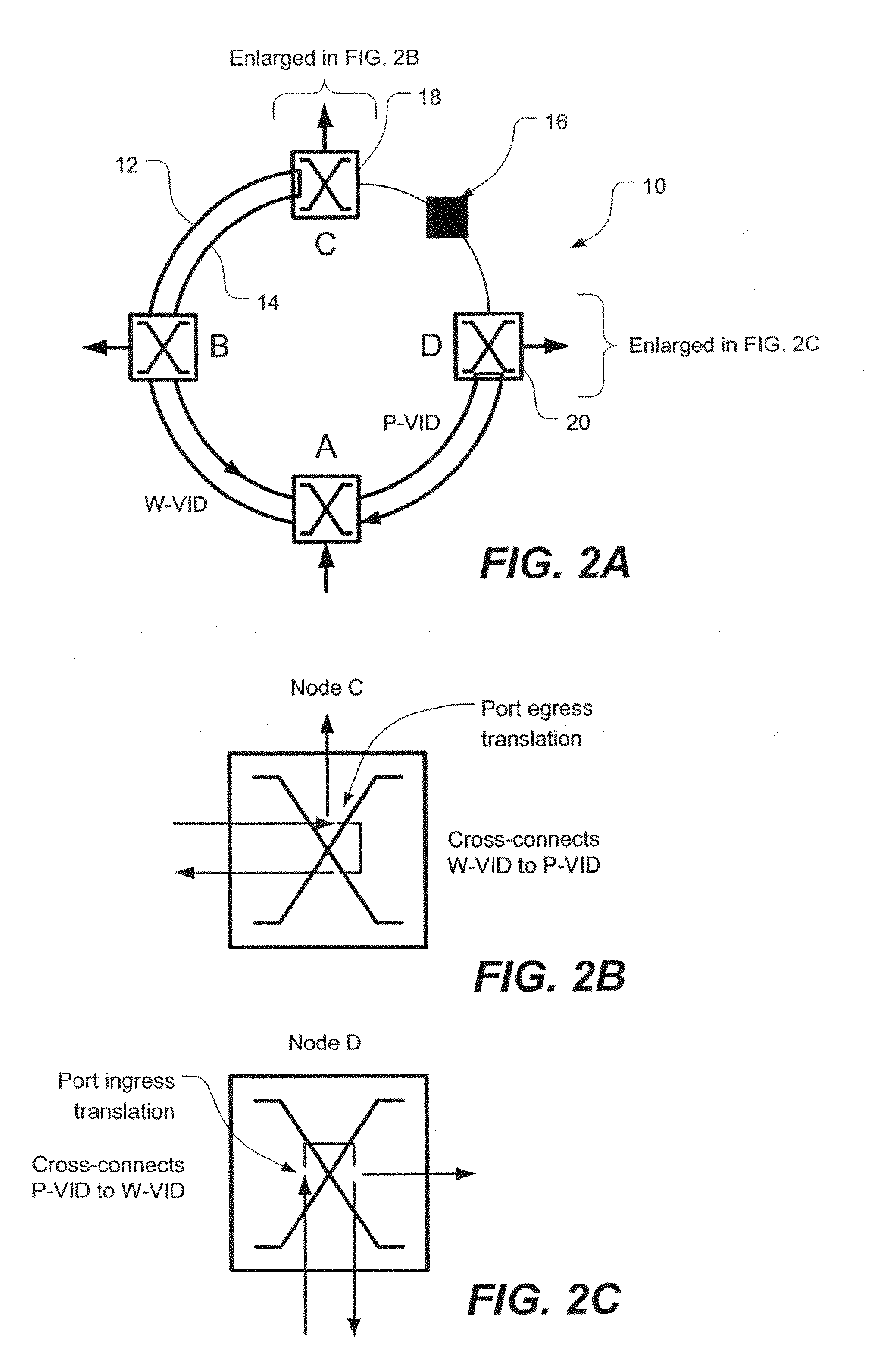Method and system for looping back traffic in qiq ethernet rings and 1:1 protected PBT trunks
a technology of ethernet rings and trunks, applied in the field of ethernet, can solve the problems of reducing the service life of ethernet rings, affecting the deployment of large (metro area) ethernet rings, and general unsuitability of standard ethernet (ieee 802.3) for network topologies, etc., and achieve the effect of reducing the delay
- Summary
- Abstract
- Description
- Claims
- Application Information
AI Technical Summary
Benefits of technology
Problems solved by technology
Method used
Image
Examples
Embodiment Construction
[0043] It will be appreciated by persons skilled in the art that the present invention is not limited to what has been particularly shown and described herein above. In addition, unless mention was made above to the contrary, it should be noted that all of the accompanying drawings are not to scale. A variety of modifications and variations are possible in light of the above teachings without departing from the scope and spirit of the invention, which is limited only by the following claims.
[0044] In general, and as will be elaborated below with respect to the specific embodiments illustrated in FIGS. 1-6, the present invention provides both a resilient, virtual ring for frame-based traffic such as, preferably, Ethernet as well as a method of routing frame-based (e.g. Ethernet) traffic over a resilient, virtual ring. Although the embodiments described below are implemented in Ethernet, it should be understood that the invention could be applied to other frame-based networks.
[0045]...
PUM
 Login to View More
Login to View More Abstract
Description
Claims
Application Information
 Login to View More
Login to View More - R&D
- Intellectual Property
- Life Sciences
- Materials
- Tech Scout
- Unparalleled Data Quality
- Higher Quality Content
- 60% Fewer Hallucinations
Browse by: Latest US Patents, China's latest patents, Technical Efficacy Thesaurus, Application Domain, Technology Topic, Popular Technical Reports.
© 2025 PatSnap. All rights reserved.Legal|Privacy policy|Modern Slavery Act Transparency Statement|Sitemap|About US| Contact US: help@patsnap.com



